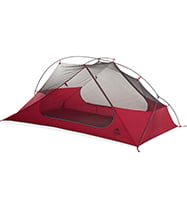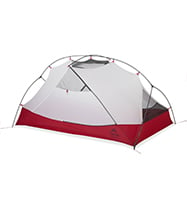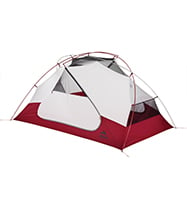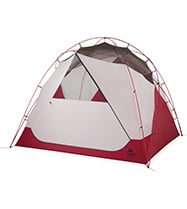4 Tips to Extend the Life of Your Outdoor Gear
When fall wraps up, many outdoor adventurers tuck their gear away in a closet for the winter. But did you know that improper gear storage can reduce the life of your gear? Failing to take steps like letting gear dry before sticking it in a closet can cause issues like premature deterioration of fabrics. Packing your tent or sleeping pad with lingering debris can cause rips as well. Fortunately cleaning, drying and properly storing camping gear can greatly extend the life of your beloved outdoor gear.
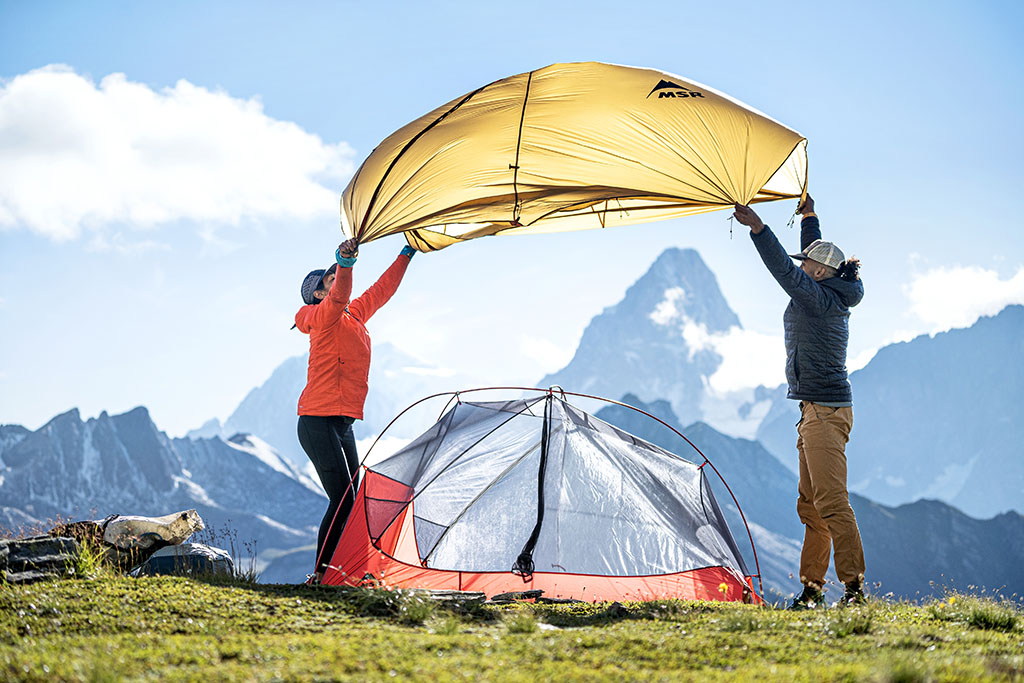
1. Keep Your Outdoor Gear Clean
Outdoor gear is made to withstand harsh environments, but that doesn’t mean you should skip the cleaning process when you get home from your trip. Packing your gear away with debris and sediment can cause premature wear and tear, resulting in less bang for your buck. To avoid this mishap, campers should evaluate whether or not it’s time to clean their tent, sleeping bag and pad, backpack and shoes after use.
Washing Your Tent
Tent fabric typically needs the least amount of attention of all outdoor fabrics because you’re not generally exposing your skin directly to the fabrics or (hopefully) spilling things inside of your tent. Even so, the tent’s exterior is quick to get muddy, which means that it can occasionally use a bit of care.
When the time comes to wash your tent, don’t put it into the washing machine. Not only can household detergents shorten your tent’s lifespan, but the washing motion can easily destroy delicate fabrics. Instead, spot clean when you notice debris or dirt on your tent, and rinse it outside with a hose on high pressure after your expeditions.
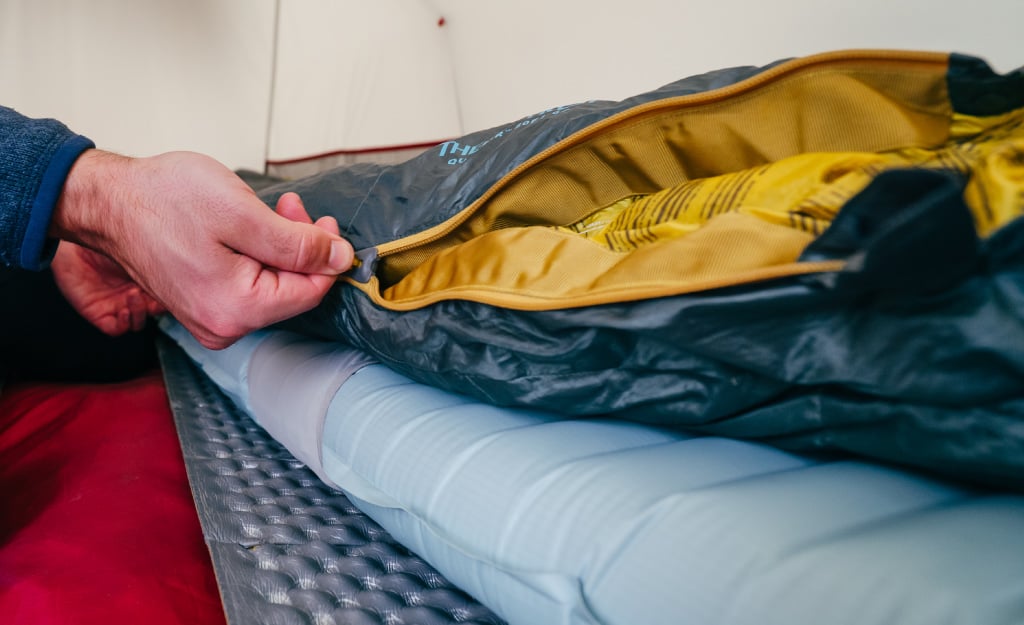
Washing Your Sleeping Bag
Sleeping bags should be handled carefully because they’re often made with thin, ultralight fabrics that can easily snag or rupture. But when it comes time to pack your sleeping bag away for the season, you should still evaluate its cleanliness. Does it stink? Is there visible grime on the surface of the sleeping bag? Do you remember the last time you washed it? These are just a few things to consider in your quest to extend the life of your outdoor gear. Keeping your sleeping bag clean can lengthen the lifespan of the insulation, helping to keep you warm for many years to come.
The industry standard suggests that most sleeping bags can benefit from a thorough cleaning about once per year depending on how much you use it. If you’re a camper who gets out every weekend, your bag might benefit from a mid-season wash as well. Avoid over- and under-washing your sleeping bag or quilt. Underwashing it can cause oils and other liquids to leak into the down and make it less effective. Overwashing can break down the fabrics faster.
When it’s time for a wash, most campers find success by using a front-loading washer and dryer on a gentle cycle with the appropriate sleeping bag soap. We know it can be tempting to use a washing service to manage your sleeping bag, but businesses like dry cleaners typically use harsh chemicals that can damage your bag. So, unless you’re thinking about working with a company that specializes in outdoor gear like Rainy Pass Repair, it’s usually better to do it yourself.
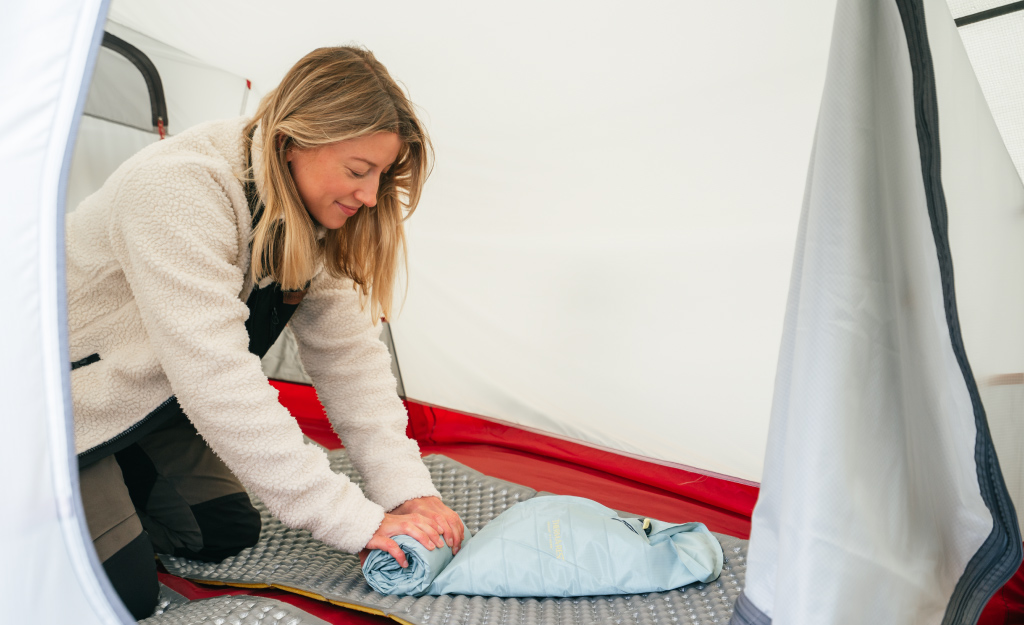
Sleeping Pad Maintenance
Like your tent and sleeping bag, inspecting your sleeping pad shouldn’t be overlooked since this is an essential piece of your sleep system. In most cases, this simply means that it should be spot-cleaned with an alcohol swab and left to air dry before storing it.
Washing Your Boots or Shoes
Boots and shoes can usually benefit from a high-powered rinse after your journey. While heavy usage is going to result in a faster deterioration than the rest of your gear, taking care of shoes can extend their lifespan as much as possible. Before tucking them away in a closet, rinse both the inside and the outside of your shoes, ensuring that you dislodge debris and mud. Then remove your insoles and let everything dry out before tucking them away.
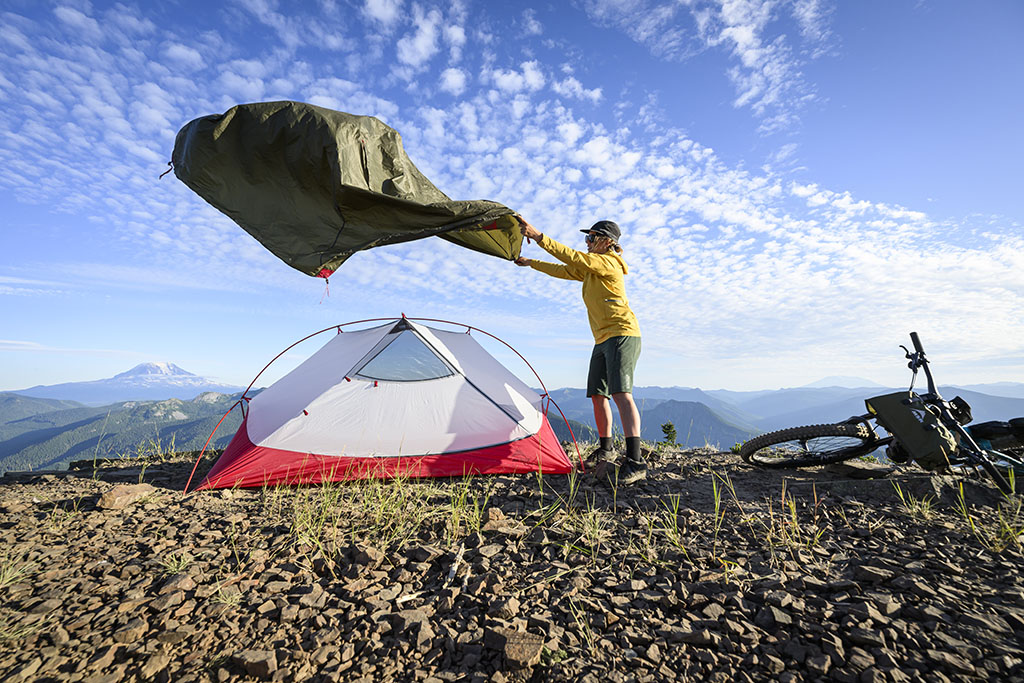
2. Drying Your Outdoor Gear Properly
Have you ever packed a tarp or backpack away only to discover that it’s covered in mold or mildew months down the line? If so, you’re not alone. Storing wet gear is a big ‘no no’ if you’re hoping to make it last. Not only does the mildew and mold add a nasty funk to your beloved collection, it can also destroy its functionality, forcing you back to your nearest outdoor store to find an expensive replacement.
The best way to avoid this issue is to vent your gear both while you’re out in the backcountry and when you’re getting ready to store it. And I mean all of it. Tents, sleeping bags and sleeping pads are the obvious vent-worthy pieces of gear here, but you also need to dry out your water filter, shoes, backpack, and anything else you might pack along the way to optimize function down the line.
The easiest way to dry your gear is by hanging it. Set up a clothesline and let the wind work its magic. You can even use a fan to quicken the drying pace of your outdoor gear before winter comes. If that’s not feasible, some gear can be tossed into the dryer on low heat, like most sleeping bags. But make sure to read the gear’s care instructions before pressing start on the dryer, since heat can destroy the performance of some gear.
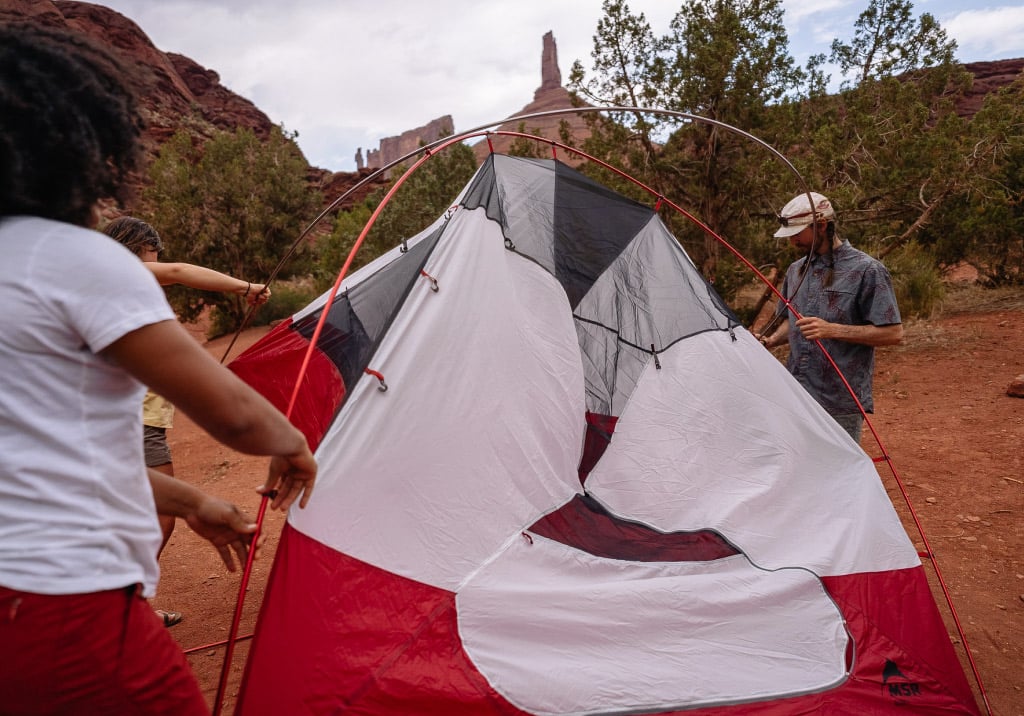
3. Repair Gear Before Storing It
Most camp gear damage can be repaired at home with the right tools. Fixing the issue before tucking your gear away for the season makes it less likely that you’ll forget about it before your next trip. The most common issue that campers face is abrasion. In tents, this often results in a small rip or puncture that can be repaired with a patch.
Sleeping pads take a little bit more finesse to repair since holes can be so small that you can’t see them with the naked eye. In this case, you should submerge the inflated sleeping pad in the bathtub or a small body of water to look for air bubbles that are escaping from the pad. After finding the leak, you can use a patch kit to stop the leak. Here’s info from our friends at Therm-A-Rest® on how to tackle leaks.
Finally, in the case that you end up with a hole in your sleeping bag or quilt, you can use Tenacious Tape or a similar material to keep everything intact. Just be sure that the shape of your patch is round to avoid the corners peeling up from the fabric.
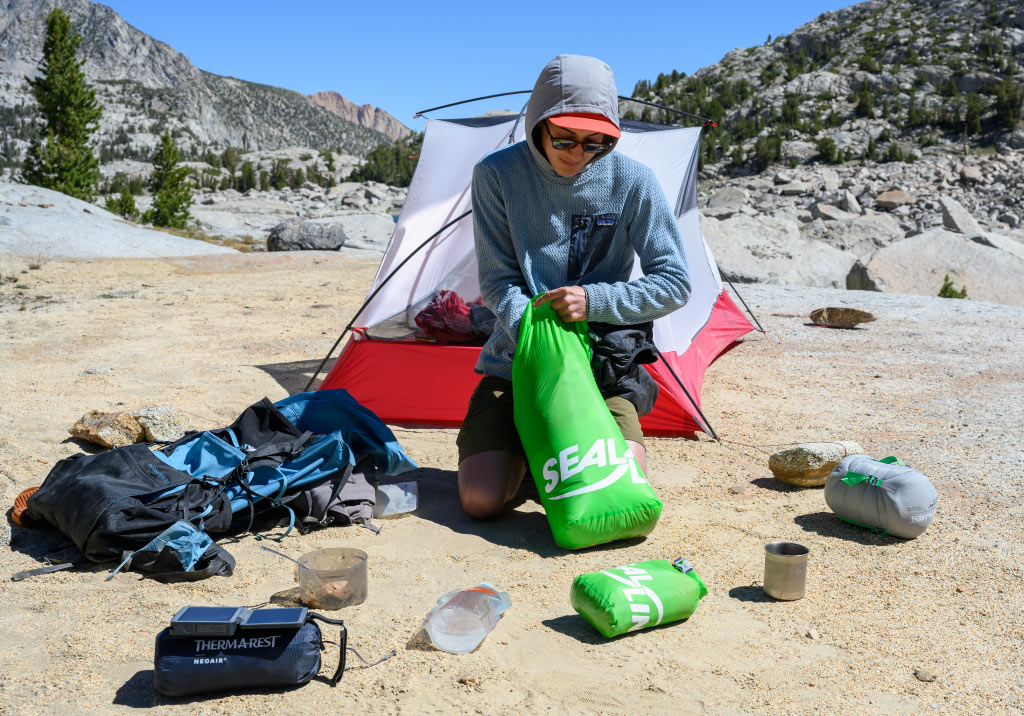
4. Store Camping Gear in a Safe Place
Knowing how to properly store camping gear is essential to the lifespan of your equipment. Once most of us stash our gear in a closet, we don’t think about it until we need it for the next trip. Keeping it in a dry, cool area is the first step. While it may be tempting to stick it in a shed, keep in mind that rodents love salt and warm materials—keep vulnerable gear in rodent-proof boxes or inside to avoid damage. If you inadvertently store something delicate near a sharp object, you might not realize if before the damage is done (and probably right before a trip when you don’t have time to repair or replace).
Ensuring that you don’t compress down-filled items like jackets and sleeping bags also gives them a better chance at retaining their worth for many years to come. Many campers and backpackers store sleeping bags in a large cotton bag or a pillowcase to allow them to breathe. You can also hang your bag by the tail loop, but keep in mind that this second method could create a shift in down. You may need to move it around periodically to eliminate cold spots before you use it again.
Failing to examine your gear before long-term storage can result in issues like mold spots, rips and the loss of quality over time. And the reality is that proper storage is really easy to do. Those who are looking for ways to extend the life of their gear should ensure that it’s clean and dry before packing it away—the benefits over time are invaluable.
Other Life-Extending Tips & Tricks:
- Use a footprint to protect the bottom of your tent while camping. This makes it less likely that a stray root or rock will rip a hole through the floor.
- Handle zippers with care: The zippers on both your tent and sleeping bag play important roles in the gear’s functionality. But they’re also quick to snag, which can cause perforations in the fabrics. For best results, handle your zippers with care, taking extra precautions to prevent fabric from jamming.
- Use a sleeping bag liner: Sleeping bag liners not only provide extra warmth at night, but they also help to contain dirt, oil and other debris that you might drag into bed during your excursion.
Related Posts:
- Tent Care 101: Keeping Your Tent Clean & Dry
- Tent Care Tips – Make Your Tent Last Longer
- Gear Modifications and Care Mistakes to Avoid
 About the Author
About the Author
Mary Beth Skylis has been lucky enough to begin her life of outdoor pursuits on long trails, hiking the 2200-mile Appalachian Trail, the 458-mile Colorado Trail and part of the Annapurna Circuit. She has feasted her eyes on the snowy Himalayan peaks, watched aggressive rhinos contemplating a charge, and observed Costa Rican monkeys leaping through the air. Her work can be found in Backpacker Magazine, Outside Magazine, and Yoga Journal.

